
Exemple d'examen normalisé destiné à la 6 A.E.P, premier semestre
- Subject:
- Languages
- Material Type:
- Activity/Lab
- Assessment
- Homework/Assignment
- Author:
- ASMAE NASRI
- Date Added:
- 05/12/2020

Exemple d'examen normalisé destiné à la 6 A.E.P, premier semestre

Le document présente quelques exercices de neuroanatomie que les étudiants en Licence en Biologie peuvent faire pour tester leurs connaissances.
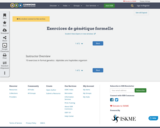
10 exercices in formal genetics : diploïdes ans haploïdes organism
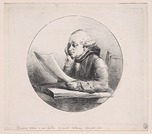
This purpose of this exercise is to help students to identify common errors in logic--or "logical fallacies"--in a variety of contexts. The exercise will serve as a review of reading and lecture on the fallacies and will require that students work together to understand the concepts.

This purpose of this exercise is to help students to identify common errors in logic--or "logical fallacies"--in a variety of contexts. The exercise will serve as a review of fallacies that have been taught and read in previous lessons. The students will contribute to one "wiki page" that is created on Canvas.
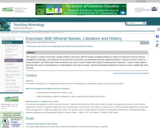
This is a series of 5 assignments I assign outside of class time, with the purpose of getting students to explore the literature resources that are available for mineralogy. The inspiration for the exercises comes from my exasperation with the repeated questions: "Why do we have to know so many minerals?" and "What about these minerals do we have to know?" Rather than saying "Everything that is important," I hope to show students that what they need to know depends on what questions they hope to answer, and that mineralogy developed in historical context, parallel with other sciences.
(Note: this resource was added to OER Commons as part of a batch upload of over 2,200 records. If you notice an issue with the quality of the metadata, please let us know by using the 'report' button and we will flag it for consideration.)
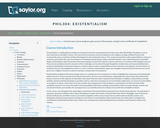
This course will examine the main focus that unites existentialists, "existence." Particularly, it will examine the concrete existence of individual human beings. Major figures or study will be, Blaise Pascal, Sóren Kierkegaard, Fyodor Dostoevsky, Friedrich Nietzsche, Martin Heidegger, Jean-Paul Sartre, Simone de Beauvoir, and Albert Camus.
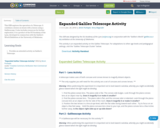
This OER explores the operation of a Telescope. It combines a lesson on lenses with a lesson using a Galileoscope. It also includes resources for further exploration. It is a product of the OU Academy of the Lynx, developed in conjunction with the Galileo's World Exhibition at the University of Oklahoma.
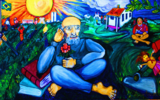
“Rhetoric in the Real” is an experiential learning, student-driven, digital, multimodal, praxis-oriented, semester-long project hosted on our class WordPress site. Throughout the semester students post and respond to each other’s lived experiences. It requires students to dissect the variegated layers of meaning and persuasion present in a rhetorical device of their choosing.
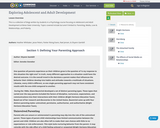
This is a collection of blogs written by students in a Psychology course focusing on Adolescent and Adult Development at Boise State University. Topics covered include but aren't limited to: Parenting, Media, Love & Relationships, and Puberty. Authors: Heather Whittaker, Jesse Peters, Parker Rising Evans, Rael Jensen, & Shyann Gambill
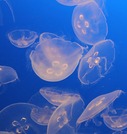
Worksheet that allows students to explore the animal diversity at the Monterey Bay Aquarium virtually.
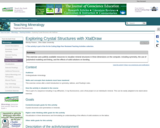
At the end of this exercise students will be able to use computer-based software to draw crystal structures and visualize symmetries present in minerals. By varying the way in which atoms or groups of atoms are displayed, they will begin to see how atoms link through bonds. Students will also begin to investigate the effects of variable composition on bonding on unit cell parameters.
(Note: this resource was added to OER Commons as part of a batch upload of over 2,200 records. If you notice an issue with the quality of the metadata, please let us know by using the 'report' button and we will flag it for consideration.)
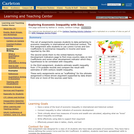
This set of assignments exposes students to data which can be used to analyze economic inequality in international and historical context. Then students are asked to generate a thesis-driven argument drawing supporting evidence from one or more of the data sources.

Explore personal finance principles through the lens of agricultural life, work, and money management. Students begin with creating an ideal rural life vision board, then learn and discuss the financial management that would be required to work toward that lifestyle. Budgeting, tracking income and expenses, banking and investments are covered in slides and end in a project to reimagine the board game Life in an agricultural setting, with careers, properties, achievements, and events rewritten to be ag-related.

This STEAM device includes different activities and tasks directed to 11th-grade students (ages 15-17) who are L2 learners with an A2 level of English. This device is aimed to help them to improve the six language skills: oral production, oral interaction, reading comprehension, writing production, and writing interaction, while they learn about Human-Machine Interaction.Duration: 120 minutes
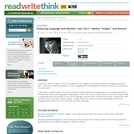
In the essay "Mother Tongue," Amy Tan explains that she "began to write stories using all the Englishes I grew up with." How these "different Englishes" or even a language other than English contribute to identity is a crucial issue for adolescents.
In this lesson, students explore this issue by brainstorming the different languages they use in speaking and writing, and when and where these languages are appropriate. They write in their journals about a time when someone made an assumption about them based on their use of language, and share their writing with the class. Students then read and discuss Amy Tan's essay "Mother Tongue." Finally, they write a literacy narrative describing two different languages they use and when and where they use these languages.
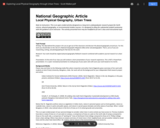
This is an open-ended activity designed as a long-term undergraduate research project for Earth science, physical geography, or environmental studies courses. It is designed to allow for substantial student autonomy with the guidance of an instructor. The activity presented here may be modified to fit one’s class and instructional style.
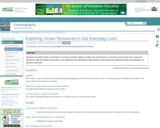
Students are asked to keep a food diary for 24 hours and then asked to analyze the products they consumed in terms of the ocean resources needed to make and deliver that product. This assignment was designed to help develop ocean literacy for students learning oceanography in a landlock classroom.
(Note: this resource was added to OER Commons as part of a batch upload of over 2,200 records. If you notice an issue with the quality of the metadata, please let us know by using the 'report' button and we will flag it for consideration.)
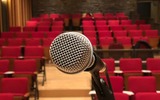
The textbook is for individuals who teach the basic public speaking course.
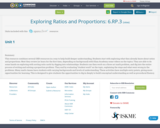
This resource combines several OER resources in a way to help build deeper understanding. Students start with exploring what they already know about ratios and proportions. Next they review (or learn for the first time, depending on background) with Khan Academy some videos on the topics. They are able to do some hands on exploring with sorting ratio cards by digging into relationships. Students can then work on a three act math problem, and dig into the entire process of writing and solving a proportion problem. They end by evaluating "student work" on the topic, explaining the steps and what went wrong in the problems.
Many math classes have students with varying backgrounds and levels of understanding. These activities have multiple entry points, giving more opportunities for learning. This is designed to give students the opportunities to dig in deeply to build conceptual understanding as well as procedural fluency.